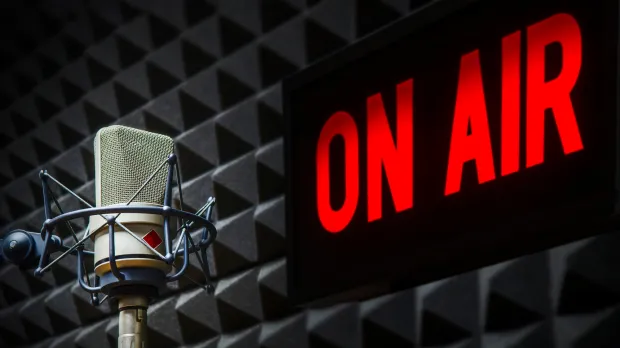
For convenience of communication, we introduce the concept of the frequencies of the transmitted signal, we divide the entire frequency range of the signal into three parts:
- Low frequency — frequencies from 60 to 200 Hz;
- Medium frequency — frequencies from 200 to 1500 Hz;
- High frequency — frequencies from 1500 to 3000 Hz.
In the entire audio frequency spectrum, there are very important sections and individual frequencies that are responsible for high-quality speech transmission and, on the contrary, introduce an unnecessary overtone of deafness, illegibility, grinding, ringing, and so on into voice broadcasting. In general, by and large, one of our main tasks is the task of generating a signal with the “correct” levels at certain frequencies. Otherwise, all the troubles will happen.
So, pay special attention to the following frequencies:
- Low frequency. Here I want to stop in more detail. Very important frequencies are the range of 80-130 Hz. It is these frequencies in the voice of the operator that create a pleasant warm «home» overtone. But at the same time, looking ahead, I note that one of the main errors encountered is the excessive amplification of these frequencies. This cannot be done, otherwise, at low levels on the receiving side, only hooting will be heard, with the almost complete absence of information content in the signal. As experiments show, the signal level at these frequencies should not exceed 15-20 dB in relation to other frequencies of a single-sideband signal. In addition, most of the transmitter energy is spent on the transmission of these frequencies. What happens with the wrong formation — we pump power, but in the end we are not accepted!
Next is a very important frequency of 160 Hz. It is in this part of the voice spectrum that the dull sound of the signal is hidden, or, as they say, the “cushion” sound. They try to immediately cut 160 Hz using available methods, for this, as a rule, they use an appropriate filter in an equalizer with a high quality factor, say 1/3 of an octave.
A very important point. In order for low frequencies to sound beautifully and deeply on the air, it is necessary to form a signal before the transmitter modulator with at least double the bandwidth margin. That is, if we want to qualitatively transmit frequencies of 60-130 Hz, then the frequency spectrum in the equalizer that forms the frequency response should start at least from a frequency of 30-75 Hz. Otherwise, unnatural sounding at low frequencies is guaranteed. The same applies to high frequencies, high-quality sound at frequencies of 2500-3000 Hz must be provided with an appropriate equalizer band in the 5000-6000 Hz region, otherwise the high frequencies will sound lifeless, dim and the whole signal will sound «flat» and inexpressive. In the literature, this is explained by such a concept as phase distortion of sound, but we will not discuss these serious issues now.
- Average frequency. A very important range in the speech spectrum, which is responsible for the intelligibility, informativeness and individuality of the voice. The naturalness and basis of the voice spectrum is formed by frequencies of 250-500 Hz. Sound engineers refer to these frequencies as the voice base.
Here, of course, one must strive to maintain a fairly even frequency response. Frequencies 700-1200 Hz are another very important range. As statistics show, most people have a characteristic gap in their voice at a frequency of approximately 700-900 Hz. This shortcoming will have to be compensated by the equalizer. In the presence of large dips at these frequencies (15-20 dB), the operator’s voice becomes, as many radio amateurs note, “gunky”, this is especially noticeable when listening to such a signal with the narrow receiver band turned on (2400 Hz and below). However, it should be noted that at high levels (10 dB or more) in relation to adjacent frequencies in the frequency response of the signal, frequencies of 1000-1500 Hz will create an unpleasant «metallic» sound.
- High frequencies. These frequencies practically do not affect the intelligibility of speech, but give it a characteristic juicy and bright sound of consonants and hissing sounds in the voice of the operator. Everything is quite simple here, with a relatively flat frequency response in the range of 1500-3000 Hz, we form a slight rise (2-3 dB) at frequencies of 2400-2700 Hz.
Like that.

About transmitters.
Given the above, we determine the requirement for the transmitting equipment. And there are actually two main ones.
First, the transmitter must provide the necessary bandwidth of transmitted frequencies in the SSB mode 60-3000 Hz.
The second is not to introduce additional non-linear distortions into the signal, with the compressor turned off, which occur when the mixers and the final stage of the transmitter do not work properly.
At the first request, everything is solved relatively simply. Modern digital transceivers have, as a rule, a fairly wide allowable bandwidth of transmitted frequencies. The declared bands of transmitted frequencies in the transmission mode, as a rule, are 100-3000 Hz (this parameter differs insignificantly for different manufacturers). But the peculiarity of the operation of digital filters of the main selection of modern transmitters is that when using an equalizer, it is easy to form a signal with a low frequency up to 50 Hz for transmission at a level of -6 dB, up to 50 Hz without noticeable non-linear distortions. A little more difficult is the issue with the transmission of high frequencies. Based on the same features, it should be noted that for most of the manufactured transceivers, digital filters are very susceptible to the formation of distortions at high frequencies with even a slight signal pumping in this area. This is especially noticeable on transceivers manufactured by YAESU and KENWOOD. Conclusion — the generated signal must have an appropriate frequency response from this point of view.
To fulfill the second requirement, you need to make sure that the output stage and the driver of the PA board work in the standard AB mode for SSB modulation. As practice shows, this requirement for a large number of manufactured transceivers by manufacturers is not observed. Sometimes you have to increase the values of the initial currents in the output stages of the transmitter by 2-3 times. And here the undisputed leader is YAESU. To be honest, I don’t really understand this energy saving policy. Much less often, there is a problem with the transmitter mixers not working properly. Their optimal operation is primarily affected by the levels of the signals supplied from the local oscillators and reference oscillators. With the appropriate measuring equipment and the qualification of a radio amateur, these issues are resolved relatively simply.
With analog transceivers, the task is complicated only by the fact that not all transceivers have the ability to turn on a high-quality broadband quartz filter in the transmission mode. For obvious reasons, the use of piezoceramic filters and EMF filters in analog transceivers to form high-quality SSB is not discussed within this topic, since these requirements are very high. First of all, these are the filter rectangularity (not worse than 1.5), the bandwidth (not less than 2.8 kHz at the level of -6 dB) and the unevenness in the transparency band (not more than 3 dB). Considering all this, we can dwell on the use of such quartz filters as:
ICOM FL-96, FL-257 (at 455 kHz).
INRAD (for a specific transceiver, INRAD produces a corresponding filter with a band of 2800 Hz).
I will give an approximate list of transceivers, leading manufacturers, which can be recommended without significant modifications to solve our problems:
— KENWOOD TS-850, TS-870S, TS-950SDX, TS-2000
— ICOM IC-746PRO, IC-756PROII, IC-756PROIII, IC-7600, IC-7700, IC-7800
-YAESU FT-1000MP, FT-1000MARKV, FT-1000FIELD, FT-950, FT-2000, FT-5000, FT-9000.
— FlеxRadio Systems SDR.



